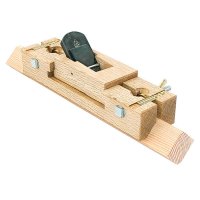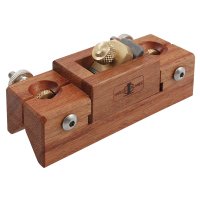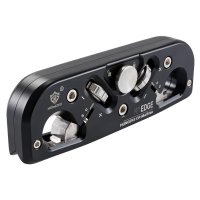
When machining solid wood and wood-based materials, the workpieces can often develop very sharp edges. These can easily break off when smoothing and finishing with a few sanding movements or planing strokes. Different edge and chamfer planes offer further possibilities for rounding off and decorating the edges.
Japanese Chamfer Planes
Japanese chamfer planes are basically ordinary Japanese planes where the chip thickness can be adjusted. The finer the chip, the better the surface finish. The special feature of a chamfer plane is that it is equipped with a fence that allows you to plane not only a 45° chamfer, but also a 60° and 30° chamfer. For this purpose, the fence can be mounted in three positions. However, the chamfer width cannot be adjusted on this plane. For uniform chamfering, you can mark the chamfer by using a marking gauge.
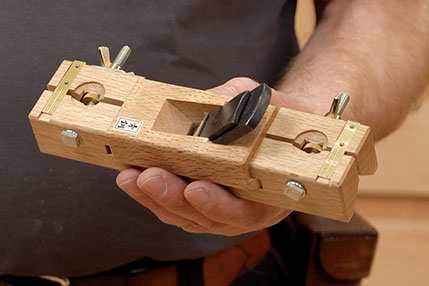
This Japanese chamfer plane produces chamfers that are all exactly the same size
This is not the case with the Chamfer Plane, Skewed and its Philip Marcou Chamfering Plane based on the Japanese Model. Here the fence consists of two bars, the distance between which is used to set the chamfer width. The edges are then planed until the plane cannot remove anything more and all edges have the same width. These planes have another special feature. The actual plane body can be moved sideways along the 45° fence. This allows the entire width of the plane blade to be used before the blade needs to be resharpened.
Round Profile Edge Planes
The Hattori Edge/Chamfer Plane is made from one piece of steel. The two skewed surfaces on the top and the milling underneath allow each blade to be used individually at both ends. For this reason, the plane cuts in both directions. The Hattori edge plane creates small curves, which ensures, for example, optimum wetting of the edge during surface treatment with paints. The edges are then planed until the plane cannot remove anything more and all edges have the same width. Since the plane has no chip-thickness limit, you should always plane with the grain. You can resharpen the cutting edges very easily with standard sharpening stones by honing the two upper surfaces flat.
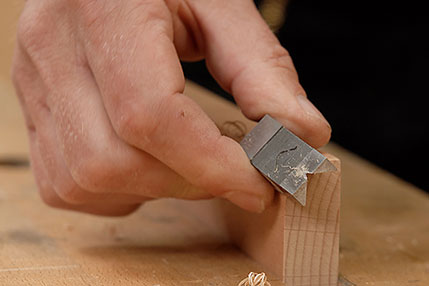
This small edge plane planes in both directions
The Radius Plane has two adjustable and replaceable blades. The front one performs the rough pre-cut, while the rear one cuts a little deeper, which very quickly creates clean edges having curves with a radius of 3 mm.
Radius/Chamfer Planes, Adjustable
The Radius/Chamfer Plane has - similar to the Hattori edge plane - two blades that plane in different directions. The depth, and thus the bevel width, can be individually adjusted with a knurled screw. The blades are designed like insert blades and have two straight cutting edges and two groove ones. The radius of the groove is 4 mm. You can therefore plane both a chamfer or a curve with a fixed radius of 4 mm. If the chamfered cutting edge is advanced so far that the side cutting edges of the blade insert also grip, you can even attach plane a quarter round moulding to the corner. The insert blades are quick and easy to replace. Since this plane also has no chip-thickness limit, plane to the desired final size slowly. The printed scales allow the planing depth to be set with repeatable accuracy.
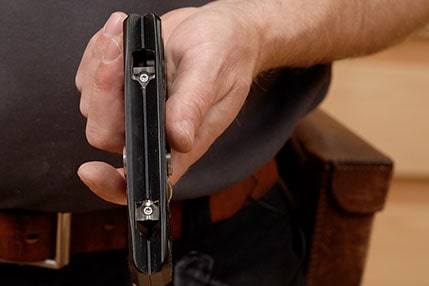
Chamfer or radius? This edge plane can do both


